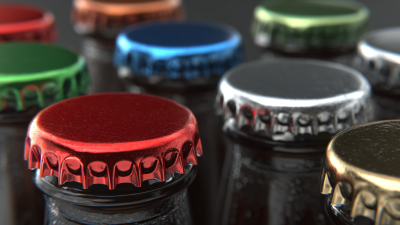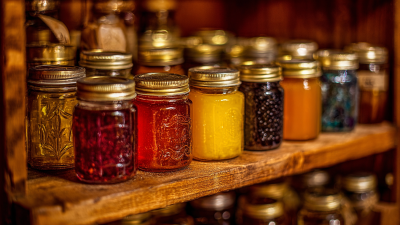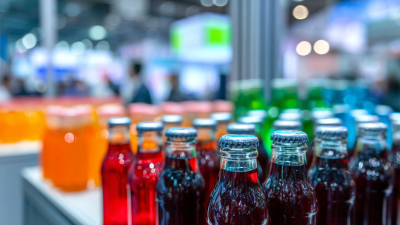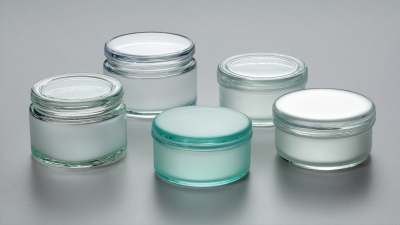
The perfume industry has continually evolved, driven by innovative designs and a deeper understanding of consumer preferences, particularly in the realm of packaging. As reported by the Global Perfume Market Research, the fragrance sector is projected to reach $64 billion by 2025, highlighting the significant role that aesthetic elements play in consumer purchasing decisions. Integral to this evolution are perfume bottles, which not only serve as containers but also as essential elements of branding and marketing.
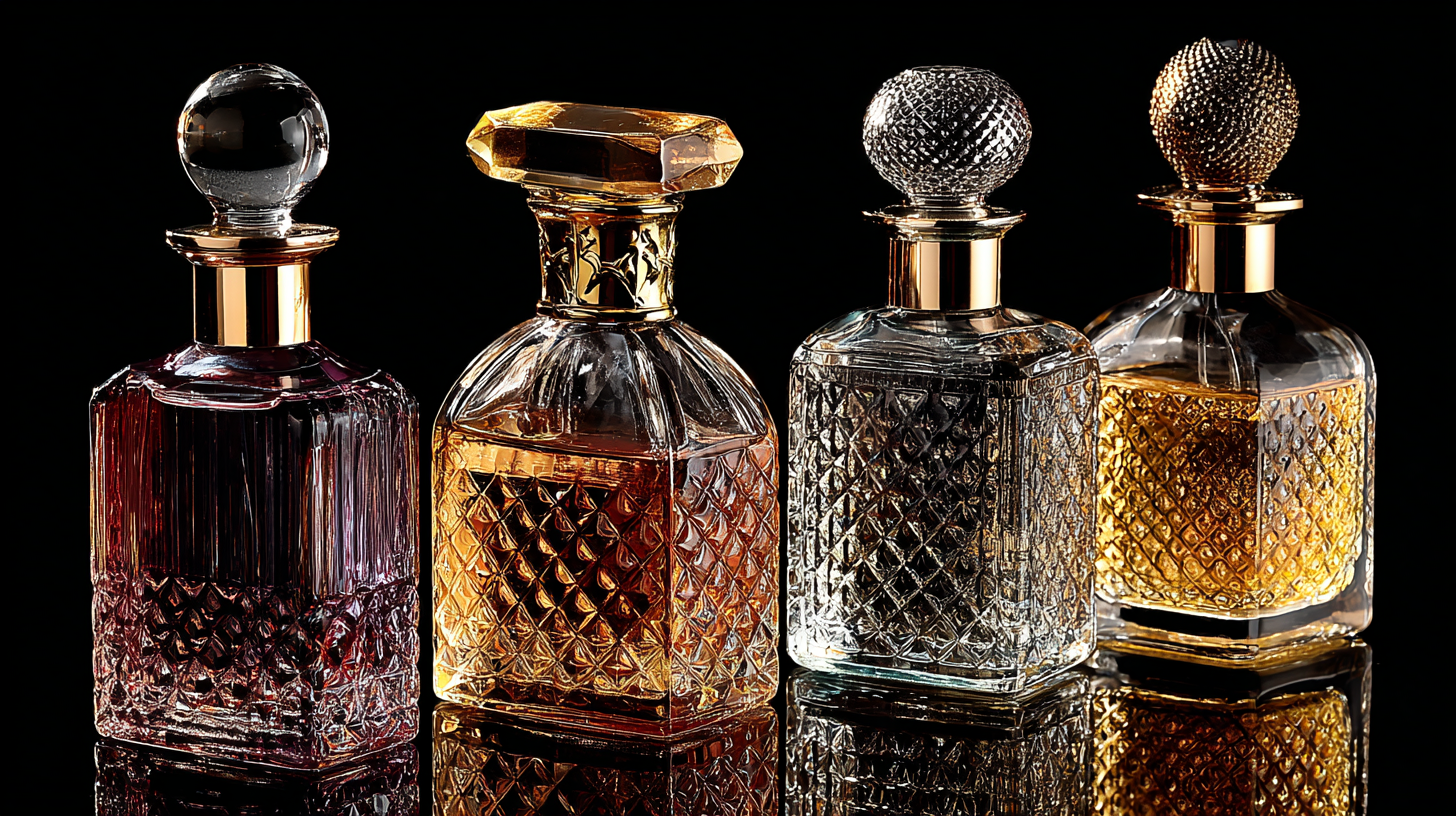
Trends indicate a growing emphasis on sustainability and unique designs, with a recent survey showing that over 60% of consumers prefer eco-friendly packaging options. The convergence of artistry and functionality in perfume bottles is reshaping the fragrance landscape, making them a captivating subject for exploration and innovation.
The evolution of perfume bottles reflects significant trends and innovations in the fragrance industry, illustrating a shift towards sustainability as brands strive to align with modern consumer values. Recent developments have highlighted this trend, with new designs incorporating eco-friendly materials while maintaining iconic aesthetics. For instance, the latest release showcases a new bottle concept that embodies the elegance of its famed design, shedding bulk and emphasizing a more lightweight structure. This not only serves practical purposes but also resonates with consumers who prioritize environmental responsibility in their purchasing decisions.
Industry reports reveal that the global fragrance market, valued at over $45 billion, is increasingly influenced by design innovation. Almost 60% of consumers consider packaging an essential factor when choosing a fragrance. Therefore, brands are investing in creative bottle designs that tell a story and evoke emotions. The integration of artistry and functionality in perfume bottle design has transformed them into statements of style, attracting a discerning clientele. As outlined in recent market analyses, the focus on aesthetic appeal alongside sustainable craftsmanship is likely to define the next era of fragrance experiences.
As the fragrance industry evolves, sustainability has become a central theme, particularly in perfume packaging. Brands are increasingly exploring sustainable materials to create bottles that not only encapsulate their unique scents but also reflect a commitment to environmental responsibility. This shift towards eco-friendly packaging can be seen in the adoption of biodegradable materials and recyclable glass, which significantly reduce the ecological footprint of fragrance products.
**Tips:** When shopping for perfume, consider choosing brands that prioritize sustainable practices. Look for labels that indicate recyclable packaging or the use of eco-friendly materials. Additionally, many companies are now offering refillable options, allowing you to enjoy your favorite scent while minimizing waste.
Moreover, innovative designs are emerging that incorporate upcycled materials. Perfume houses are not only focusing on the aesthetic appeal of their bottles but also on their environmental impact. By using resources that would otherwise end up in landfills, brands can maintain an upscale look while championing sustainability.
**Tips:** Support brands that are showcasing these innovations by checking their sustainability reports. Engaging with fragrance communities on social media can provide insights into which brands are truly committed to making a difference through their packaging choices.
| Trend/Innovation | Description | Sustainable Material Examples | Impact on Environment |
|---|---|---|---|
| Recyclable Packaging | Use of materials that can be easily recycled | Glass, Aluminum | Reduces waste and conserves resources |
| Biodegradable Materials | Packaging materials that break down naturally | PLA (Polylactic Acid), Bamboo | Lowers landfill contributions and pollution |
| Refillable Bottles | Bottles designed to be refilled and reused | Glass, Stainless Steel | Minimizes waste and promotes sustainability |
| Minimalist Design | Simpler packaging to reduce excess material use | Recycled Paper, Compact Glass | Conserves materials and reduces environmental footprint |
| Plant-Based Inks | Use of inks derived from natural sources for printing | Soy Ink, Vegetable Oil Inks | Less harmful chemicals in production |
The fragrance industry is experiencing a transformative shift with the integration of innovative technologies like 3D printing. This cutting-edge method is revolutionizing the way perfume bottles are designed and manufactured, allowing for greater customization and creativity.
 3D printing enables designers to create intricate, bespoke shapes that were previously difficult or impossible to achieve using traditional manufacturing techniques. This not only enhances the aesthetic appeal of fragrance packaging but also allows brands to express their unique identities through distinctive bottle designs.
3D printing enables designers to create intricate, bespoke shapes that were previously difficult or impossible to achieve using traditional manufacturing techniques. This not only enhances the aesthetic appeal of fragrance packaging but also allows brands to express their unique identities through distinctive bottle designs.
Brands are increasingly utilizing 3D printing technology to merge artistry with functionality. For instance, some companies are producing luxury perfume bottles that feature complex designs and textures, elevating the overall consumer experience. This innovation extends beyond aesthetics; it also supports sustainable practices by reducing waste associated with conventional production processes. As the demand for personalized and unique products grows, 3D printing stands out as a crucial technology that is shaping the future of perfume bottle design and packaging in the fragrance industry.
The aesthetics of perfume bottles play a pivotal role in shaping consumer choices in the fragrance industry. According to a recent report by Grand View Research, the global perfume market is projected to reach $64.6 billion by 2025, with a significant portion of this growth attributed to innovative and visually appealing packaging. With brands increasingly recognizing that the presentation of their products is just as important as the scent itself, there is a marked trend toward unique bottle designs that reflect the brand's identity and ethos.
For instance, a survey conducted by Mintel revealed that 61% of consumers consider the design of the packaging to be a crucial factor in their purchasing decision. The rising popularity of limited-edition bottles and collaborations with contemporary artists further illustrates how aesthetics can enhance perceived value and desirability. This trend not only entices consumers but also fosters brand loyalty, as strikingly designed bottles often become sought-after collector’s items. Therefore, as trends and innovations continue to evolve, brands that prioritize aesthetic appeal in their perfume bottles will likely capture the attention and spending of today’s discerning fragrance enthusiasts.

The impact of limited editions on perfume bottle trends is profound, reshaping how consumers engage with fragrances and the brands behind them. According to a recent report by Grand View Research, the global fragrance market is expected to reach USD 55.3 billion by 2025, with limited edition releases playing a pivotal role in driving this growth. These exclusive offerings not only appeal to collectors and enthusiasts but also create a sense of urgency, prompting consumers to purchase quickly to avoid missing out.
Limited edition perfume bottles often feature unique designs and craftsmanship that set them apart from standard offerings. This creativity attracts consumers and emphasizes the brand's artistic vision, as evidenced by the 2022 Annual Report from Euromonitor International, which noted that 47% of consumers are willing to pay a premium for products packaged in aesthetically appealing bottles. Furthermore, the emotional connection fostered through these limited releases enhances brand loyalty, encouraging repeat purchases and boosting overall sales in a competitive industry. Brands are innovating their designs and marketing strategies, recognizing the significance of these trends in capturing consumer interest and loyalty.
